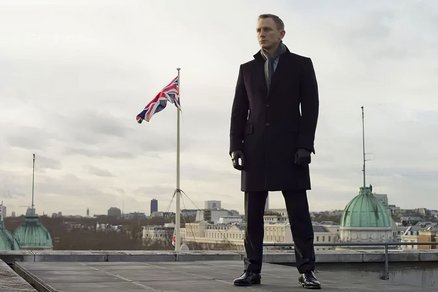
Shang-Chi and the Legend of the Ten Rings
Curriculum links: This case study can be used for those studying ‘Section A: Media Industries and Audiences’ on the OCR A-Level Media Studies specification.
The 25th instalment of the Marvel Cinematic Universe (MCU), Shang-Chi and the Legend of the Ten Rings, is an origin story about a young Kung-Fu master who is forced to confront his past when his estranged father draws him into a search for a mythical village. Under the shadow of the Ten Rings, an organisation that he’d chosen to leave years before, Shang-Chi (Simu Liu) and his friends must fight off frequent attacks and thwart his father’s plan to destroy the legendary village of Ta Lo.
Classification Issues
Shang-Chi and the Legend of the Ten Rings was submitted to the BBFC in August 2021 and was classified at 12A for cinema release, with the content advice of ‘moderate violence, fantasy threat, bloody images, language’.
As with many films in the extended Marvel franchise, action set-pieces feature heavily in Shang-Chi. BBFC Guidelines at 12A state that, ‘There may be moderate violence but it should not dwell on detail.’ The violence establishes the 12A category from the outset of the film when Xu Wenwu (Tony Leung) harnesses the full power of the Ten Rings to take out an entire army. Blue energy blasts rip through the dense barrier of soldiers, delivering impactful blows and crunchy body slams. One soldier is hurled up into the air and lands upside down, with a sound suggestive of a broken bone. However, the sequence moves very quickly, tracking Wenwu’s kinetic movements and obscuring stronger details of violence with dust.
Violence in Shang-Chi fuses elements of martial arts with the MCU, incorporating a range of fighting styles and imagery which speak to the protagonist’s Asian heritage. One of the biggest set-pieces in the film, and another indicator of 12A violence, is the bus fight sequence in which we see Shang-Chi and his friend Katy under attack from members of the Ten Rings. This showcases choreographed and heavily stylised hand-to-hand combat as Shang-Chi weaves in and out of the bus and around its nervous passengers.
Slow-motion effects isolate certain moves as punches are thrown and Razor Fist brandishes his bionic arm, which consists of a long steel blade that comes very close to Shang-Chi’s face and body at certain points. It’s a high-octane sequence, with the bus careering out of control down a busy San Francisco street, adding a sense of impending threat to the violence. However, although we see Razor Fist and his cronies thrown through windows and sucked into the bus’s electrical innards, there is no focus on injuries or the process of death. The threat is also tempered by occasional comic asides to the action from Katy and Klev, who is busy providing a commentary and live stream.
At 12A, BBFC Guidelines state that: ‘There should be no emphasis on injuries or blood, but occasional gory moments may be permitted if justified by the context’. ‘Bloody images’ features in BBFC content advice for Shang-Chi and the Legend of the Ten Rings and covers the sight of blood following violent scenes, as well as the occasional close-up emphasis on cuts and grazes sustained by certain characters. However, these details are not focused on for sustained periods and also incorporate elements of fantasy: monsters do battle with humans and each other and sometimes explode into showers of colourful gunk. While these moments convey the impact of violence and threat with a relative amount of detail, the colour of the monster ‘blood’ situates the action within a fantastical context that is clearly far-removed from real-life, and is therefore unlikely to be too distressing for audiences.
Similarly, while threat might be persistent throughout the film and sometimes bleed into modern settings, there are frequent reprieves for the main characters. The darker moments in Shang-Chi, such as our young hero witnessing the death of his mother and his subsequent abusive upbringing at the hands of his grieving father, are emotional; however, the overall tone of the film is not upsetting, and so we are happy with such scenes at 12A.
Language was another factor in the film’s 12A classification: a single use of the term ‘bitch’. Meanwhile, other milder terms used in the film (‘ass’, ‘shit’ and ‘bloody’) would have been acceptable at PG.
Katy’s recollection of being called ‘Gangnam Style’, despite not being Korean, would also have been acceptable at PG. The moment clearly undercuts the racist sentiment with comedy, while demonstrating that such attitudes are clearly not endorsed and are in the minority.
Discussion Points
- How does Shang-Chi blend different cultures with the MCU? What is the significance of having an Asian superhero as the lead?
- Many titles from Disney’s Marvel franchise have been classified at 12A on film and often come with a request for 12A from the distributor. Why might a 12A rating be desired by Disney?
- Do you agree with the 12A rating? Is there anything you would add to the BBFC’s content advice for the film?
You can also try our ‘Rate a Trailer’ resource for Shang-Chi and the Legend of the Ten Rings.
Recommended Viewing
- Snow White and the Seven Dwarfs (William Cottrell, David Hand, Wilfred Jackson, Perce Pears, Larry Morey, Ben Sharpsteen, 1937) U
- Black Panther (Ryan Coogler, 2018) 12
- Skyfall (Sam Mendes, 2012) 12


